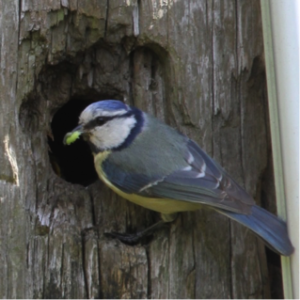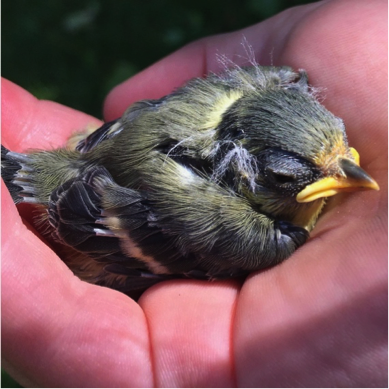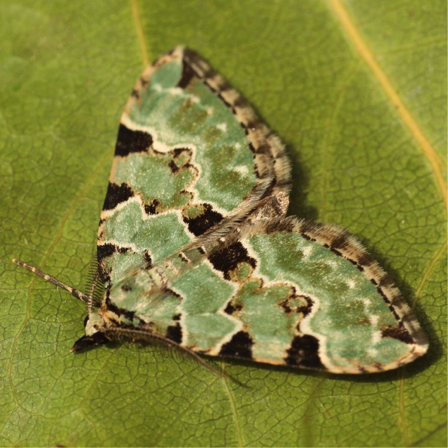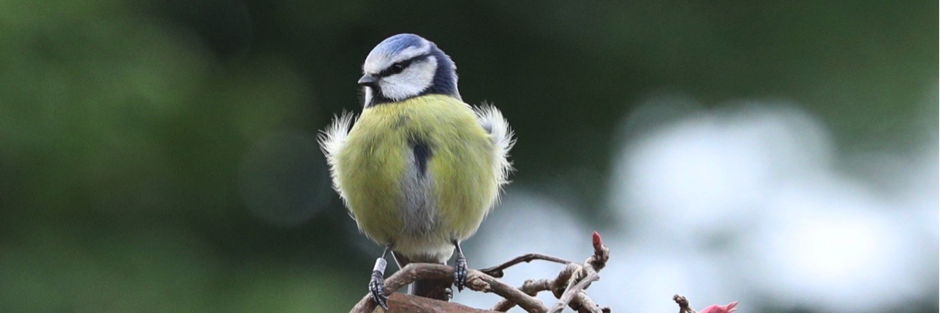Report from a BOU-funded project
 Until recently, understanding the diet of birds usually involved either invasive procedures or lengthy periods of observation, combined often with a great deal of detective work and/or educated guesswork. The problem is trickier still when trying to understand what is being fed to young birds in the nest, and even more problematic when that nest happens to be in a nest box. More recently, motion sensed cameras at the entrance to such nests have been used to monitor the food being brought in by parents. However, in temperate woodland nesting birds, such as Blue Tits, this food often tends to be either tiny or, by dint of many caterpillars being similarly camouflaged to avoid being predated, rather difficult to distinguish.
Until recently, understanding the diet of birds usually involved either invasive procedures or lengthy periods of observation, combined often with a great deal of detective work and/or educated guesswork. The problem is trickier still when trying to understand what is being fed to young birds in the nest, and even more problematic when that nest happens to be in a nest box. More recently, motion sensed cameras at the entrance to such nests have been used to monitor the food being brought in by parents. However, in temperate woodland nesting birds, such as Blue Tits, this food often tends to be either tiny or, by dint of many caterpillars being similarly camouflaged to avoid being predated, rather difficult to distinguish.
The development of environmental DNA (sometimes referred to as eDNA, or DNA metabarcoding) approaches offers the potential to revolutionise our understanding of the DNA present in environmental samples, which can then often be attributed to individual species. Such methods are starting to be widely applied to diverse samples from the natural world, including to collect information on species present in an area from samples of, for example, water or soil. In our case, we aimed to find remnant DNA originating from invertebrate prey species within the faecal sacs produced by nestling Blue Tits.
The minute amounts of DNA present are first extracted and then amplified using polymerase chain reactions (PCR) to make them easier to detect. Small sections of the DNA (referred to as barcodes) that are indicative of a species, or genus, are then detected through sequencing, to provide information on the likely prey being fed to the nestlings.
In 2017-18, we were funded by the BOU to explore the potential for these new approaches to identify the precise invertebrate prey species being fed to nestling Blue Tits that bred across a woodland nest box scheme. The scheme spanned areas of woodland and suburbia surrounding the Biosciences department at Durham University.
Nestling Blue Tits are very sanitary in their toilet habits and thoughtfully package their poop into a neat faecal sac, that can easily be collected whilst doing routine ringing (banding) or monitoring of chicks in nest boxes.

Figure 1 A young Blue Tit, which often helpfully provide a faecal sac when temporarily extracted from a nest during routine monitoring.
We collected faecal samples across the nesting period, and across a range of different nests, to pilot the technique. A major concern was the extent to which DNA was preserved after it had passed through the rather caustic digestive tract of a bird.
After much wrangling with methods – undertaken by Claire Branston, who was doing a NERC-funded PhD on understanding Blue Tit nesting phenology and diet, and with much support from colleagues at Newcastle University – we finally had a system that seemed to work and used primers that aimed to amplify most invertebrate taxa. We submitted 304 samples from nestling faecal sacs for metabarcoding and were thrilled when, finally, the results from 301 of the 304 samples came back as containing DNA information.
The output from samples contains information on the number, and types of DNA fragments that have been detected from the amplified samples; these individual detected samples being referred to as reads. After cleaning the data, excluding any reads that were likely to represent Blue Tit DNA, and those that could not be assigned to any taxonomic group, we found that the vast majority of reads were assigned, as expected, to insects. Amongst the insect orders, Lepidoptera (butterfly and moth caterpillars), Coleoptera (beetles) and Hemiptera (true bugs) were the most commonly returned reads. In about a third of the samples that contained caterpillar DNA, this was attributed to winter moth, which has always been quoted as a major constituent of Blue Tit diet. However, even more common (36% of samples containing caterpillars) in the nestlings’ diet were micromoth caterpillars, which would not have been detected using non-DNA methods. Similarly surprising was the number of faecal samples containing beetles, and weevils in particular. Weevils occurred in twice as many samples as winter moth caterpillars.

Figure 2 A green carpet moth – one of many common woodland moths whose caterpillars find their way into the diet of nestling Blue Tits.
In addition to developing a better understanding of the diet of what is being fed to nestlings, the pilot project also demonstrated another potential use of faecal eDNA sampling – providing records of cryptic and hard-to-sample insect taxa in woodland systems. Adult Blue Tits find it much easier to collect insects from the very tops of trees, or in inaccessible areas than can a typical entomologist. Therefore, faecal samples may well prove a very useful means of sampling such invertebrates.
In our samples from Durham woodlands we detected invasive insect species (harlequin ladybird), established the continued presence of a rarely recorded canopy butterfly (the purple hairstreak), and also recorded two species apparently for the first time (according to the National Biodiversity Network records) in County Durham (including a bug called the fine-streaked bugkin).
So, our pilot study has helped to demonstrate the utility of DNA metabarcoding for understanding diet in birds, and to understand what is being fed to individual chicks within nest boxes. Rather unexpectedly, we also discovered a novel means of sampling treetop invertebrate species (at least the edible ones).
Funding
Stephen Willis (Professor of Ecology and Evolution, Durham University, UK) was awarded an ornithological research grant for £1,500 in 2017 for a project entitled ‘Using DNA metabarcoding to understand the diet of avian insectivores in different woodland habitats’.
Image credit
Top right: An adult Blue Tit bringing a typical green moth caterpillar to feed its young (in this case safely hidden in a nest in an old bolt-hole in a fencepost) © Stephen Willis





